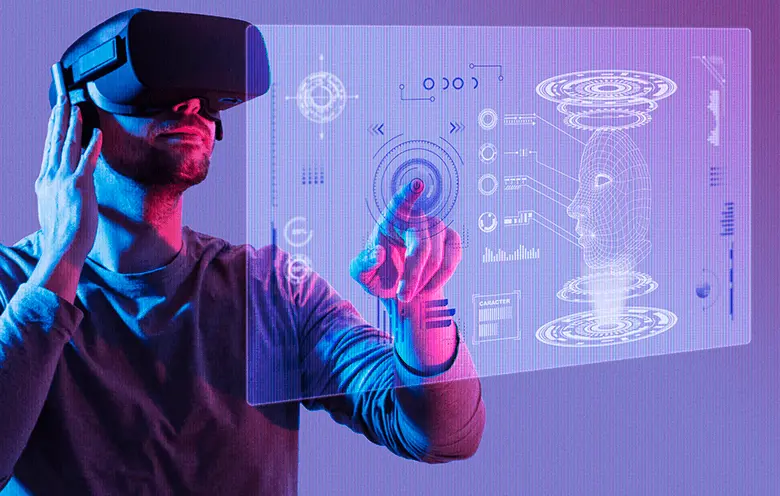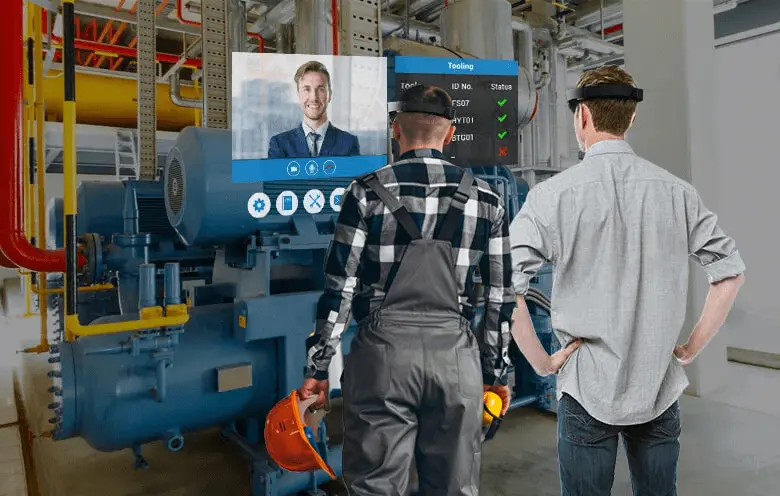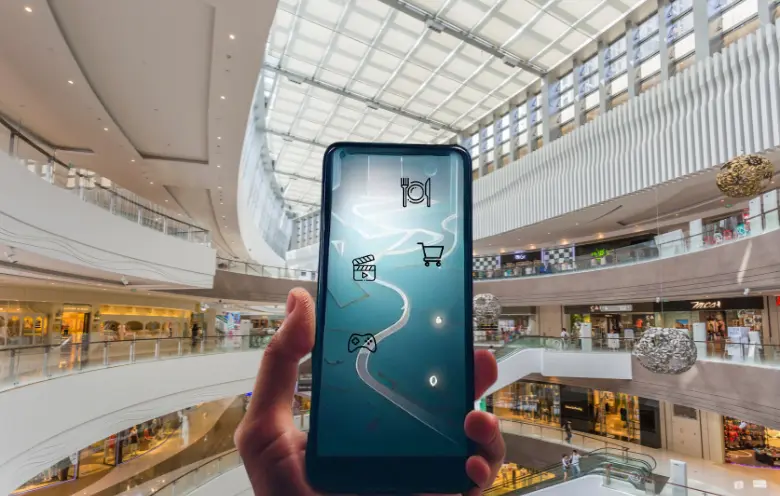Industrial augmented reality (IAR) is the integration of augmented reality (AR) with an industrial process. Ever since the technology came into existence, it has been tried in many applications to support industrial methods.
Newer technologies are modifying the way industries work, and hence they are reshaping the market. Therefore it would not be wrong if we call the present time as the era of technological transformations. Along with the Internet of Things, artificial intelligence, machine learning, and other growing technologies augmented reality is thriving and acting like a real game changer for many industries.
In addition to experimenting and utilizing other latest technologies, a number of manufacturers have started exploring the advantages of using industrial AR applications to improve their productivity and efficiency. The manufacturing industry can integrate augmented reality into multiple functions like production, maintenance, quality control, expert support, and training employees. The more functionality that is instilled with the AR applications, the greater would be the ways in which it will transform manufacturing processes. These augmented reality applications can be deployed on various hardware devices such as HoloLens, Magic Leap, Epson as well as on smartphones and tablets.
There are various processes in which AR can be applied and support manufacturing:
- Complex assembly
- Maintenance
- Expert support
- Quality assurance
- Employee training
Complex assembly
The contemporary trends of manufacturing include assembling numerous components in a specific order to create a functional product in the least possible time-frame. This is a fact for manufacturing of all products that include multiple parts, whether it is a smartphone, a car, or even a machine – every product needs a different set of instructions for assembly.
In the assembly process, the cycle time is very important, and the skills and performance of the operator play a significant role in completing the process perfectly in one attempt. Since the operator has to follow the work instructions that are displayed at his work station for each step in the process, completing hundreds of steps in one single assembly process is tedious.
With the emergence and incorporation of augmented reality, the instructions that were previously given in a PDF format, and were a little hard to work through at the worksite, are made glance-able in the field of view so that the technician can keep his hands-free and view the visual instructions enabled with a voice-control at all the times.
The instructions are broken down and supplemented with technical drawings, along with videos from the previous technician, which are put onto the AR glasses. This enables other technicians to keep their hands free to perform the task and saves them from the hassle of walking over to the workplace to figure out something.
Thus, a mobile AR application acts as a virtual assistant and eases the workload of the technician. This results in better productivity and reduction of errors in the assembly process.
- Pricing calculation errors related to multiple pricing models, managing discounts, etc.
- Unreliable and unrealistic traditional processes lead to weeks of back-and-forth.
- Lack of collaboration between the client and the production or engineering department.
- Other challenges include a longer quote-to-order cycle, eroding profit margins and error-prone orders.

Streamline sales process with Augmented Reality (AR) product visualization
Webinar agenda
- Why manufacturers should realize the importance of Augmented CPQ
- Common challenges faced by manufacturers to close deals faster
- Ways to streamline sales process using Augmented CPQ
Maintenance
Maintenance of equipment involves detailed knowledge of each and every part of the equipment and its function. Moreover, in traditional practices of maintenance, the service technician needs to refer to the service manual, which carries all the relevant information, and confirm the maintenance object with the help of a maintenance manual which is a time-consuming process.
Hence, after the assembly of products, augmented reality can be used to support the maintenance of the manufactured product.
Let’s understand this with the help of an example. Imagine a situation where a technician has to fix some problem with a machine, and he has the support of an AR display device. So when he looks at the equipment, he also gets to see the information that is only relevant to the part that needs to be fixed. Imagine how helpful it would be for him to get the required information in real-time and fix the issue quickly.
No doubt it would be extremely beneficial to check a machine’s status just by taking a look at it via an AR display, but AR has more potential than just finding errors.
For example: If while fixing an error, the technician detects a new problem, he can contact the technical center by VOIP and show them the error via an AR device. The person from the technical center can send him the solution which the technician can view with the help of the AR device and fix the problem as per the instructions received in the form of visual and voice assistance.
Expert support
Another area in which AR has a big role to play is in facilitating expert support. Most of the manufacturers even provide services which involve sending a technician to the client’s site for fixing the problem. Usually, a lot of technicians are employed for such tasks in broadly dispersed manufacturing operations, but in certain situations when it is not possible to send a technician immediately or if the client’s operations are highly affected due to the delay, there has to be some way to handle the situation.
In such times, if you have the facility of using augmented reality-enabled devices, you’ll not have to send the technician to the site in person. With an AR display, your technician can look to the problem with the client’s equipment from your location and guide the client’s technician on how to fix it.
Your technician can even add notes on the view of the other side’s technician and highlight the exact points that need to be focused. In this way, your technician can easily provide support and inspect the equipment remotely. Thus AR offers a technological solution and helps in bridging the skills gap in manufacturing.
Hence AR minimizes the need to train every technician and helps in using the expert’s knowledge by means of telepresence.
Quality assurance
Let’s explore how AR can be integrated with another segment of manufacturing, i.e., quality assurance. This is a very important task because it confirms that the manufactured product meets all essential specifications. In usual practice, there is a checklist that has all the checkpoints, and the quality examiner checks the product and fills out the list before the product is sent for delivery or not sent in case of rejection. So the quality of the final product also depends upon the accurateness of the quality inspection process.
An AR assisted quality control process enables the overlay of 3D CAD data on live video of the real product. And it is also possible to display other important information like dimensional accuracy, tolerances, interference and surface finish in real-time. Use of AR would definitely minimize the time of inspection considerably.
Furthermore, Microsoft HoloLens enables the projection of the augmented version of information right on the product which is to be inspected. So AR provides an interactive platform to simplify the complicated task in a more competent way.
A well-known global automotive supplier has developed a software solution for the process of quality control using Holo-Light. The program helps in inspecting a car and finding possible defects using Microsoft HoloLens. Every time, a quality examiner looks at the car wearing his HoloLens, only the parts that need to be inspected get highlighted. Furthermore, the examiner even gets step-by-step guidance for inspection.
Training employees
Training is a very important aspect of a job. By providing good training to employees, you refine the skill set of your workers, boost productivity and create a safer and more efficient working environment.
The usual practices of paper or monitor-based training help initially but do not help the employee to retain the training benefits for a longer period.
AR integration with the training module superimposes the realistic 3D models on it making it interesting, interactive and leaves a long-lasting impact upon the employees.
Augmented reality-based training helps to:
- Increase employee engagement
- Train employees remotely
- Remove the need for consulting manuals
- Understand the training material despite a language barrier
- Ensure safety during the training
By using an AR program, you can superimpose instructions, images, animations, video clips, audio clips, circuit diagrams, 3D model, etc. with the existing training program.
And since the interface of this AR platform is interactive, you can use hand gestures to zoom or rotate and access the section of your interest in detail.
Concluding note
The fact that augmented reality helps in performing complicated tasks easily, quickly, and conveniently has led the manufacturing industry to embrace and use the technology significantly. There is no doubt about the potential that the technology holds, which is substantial and with the latest advancements in hardware, software, and data handling ability; the benefits that augmented reality would impart to an industrial set up are going to be huge.
With the intense expertise that our developers hold in the augmented reality mobile app development, we are constantly innovating and exploring the technology in depth to deliver the best AR applications to support your manufacturing operations. If you find the idea of integrating augmented reality in your manufacturing setup enticing, get in touch with our experts for more information.



